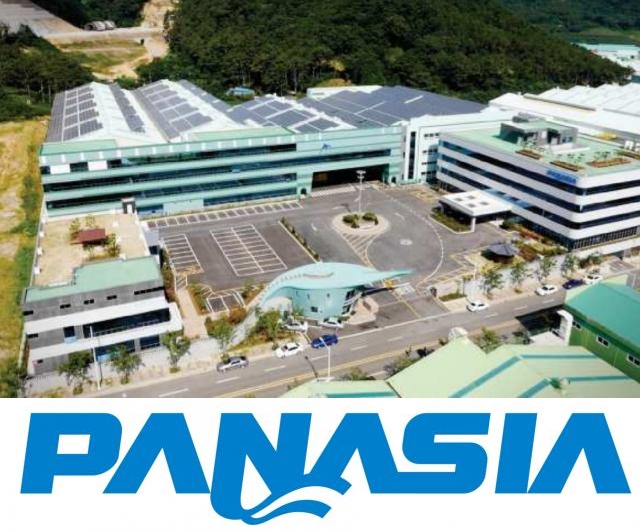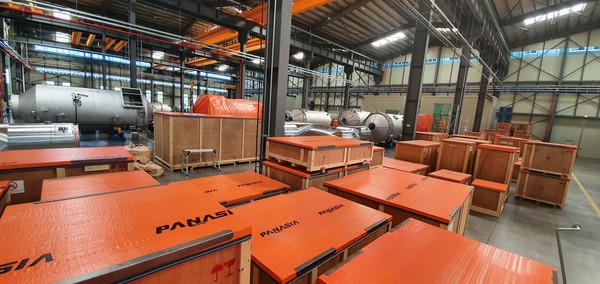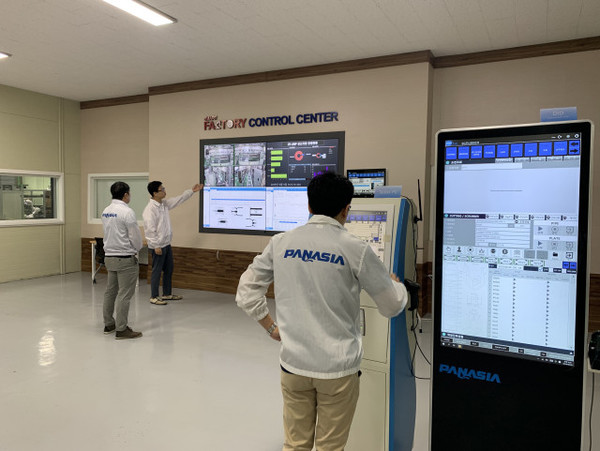
- This is PANASIA
- ESG Management
- History
- Smart PANASIA
- Contact information
 About
About
Check PANASIA introduction,
ESG management, and History
information
- Energy Solutions
- Air Solutions
- Water Solutions
 Eco-friendly Solution
Eco-friendly Solution
About Global environmental
regulation, Hydrogen business,
Air quality, and Water quality
environment solutions
- Product Service
- Service Network
- Customer Service
 Customer Support
Customer Support
Check the Panasia’s
after service
- About
- Eco-friendly Solution
- Customer Support
- Media
NEWS

PANASIA investing aggressively in R&D and production infrastructure
Production
capacity worth up to 100 million won, following completion of 2nd Factory
Extension of smart factory line at headquarters
“We will become a beneficiary
company of ‘Green New Deal’ through investing in
hydrogen reformer”

View of the PANASIA headquarters based in Mieum Industrial Complex, Gangseo-gu, Busan, Republic of Korea
Busan-based company PANASIA has started to invest aggressively in production equipment. In a move apparently meant to cope effectively with the growing demand for scrubbers, the mainstay of PANASIA’s product line, and to improve productivity and quality, the company seems intent on creating a portfolio that reflects its transition from a marine equipment manufacturer to an eco-friendly system expert.
Having recently completed the extension at 2nd Factory, PANASIA announced on the 10th that it now has a production capacity worth up to 100 million won per year.
At 2nd Factory, scrubbers are the mainstay of its operations. A rep
confided that the factory is already filled with components for scrubbers.
Scrubbers are used to reduce SOx emissions from ship engines and boilers.

Scrubber awaiting delivery at 2nd Factory (Source: PANASIA)
Scrubbers, in particular, have seen exponential growth in demand as the International Maritime Organization (IMO) began to implement tighter regulations for marine fuels early this year. Forecasts indicate that PANASIA’s aggressive investing will produce a result in a short period of time. The IMO’s regulation lowers the sulfur content in marine fuels from 3.5% to 0.5% for all types of ships around the world.
According to Clarksons, a maritime research agency, around 3,900 vessels
are currently equipped with scrubber installations, with more installations to
be completed.
PANASIA has reportedly benefited the most from these
changes in regulations. Since 2018, PANASIA has taken steps to enter the
scrubber market by leveraging its expertise in tank
level gauging systems. In a mere two years, the
company has gained the 4th largest share of the global market.
Last year, the company saw its sales increase by 5.7 times and operating income
by 514 times, on a year-over-year basis.
At the headquarters (1st Factory), PANASIA is adding a new
line equipped with a smart factory system. By the second half of 2020, the
company is planning to complete an automated production line, which combines a tank
level gauging system with Internet-of-Things (IoT) technology.
Through these deployments, the company plans to build a system consisting of sensors, IoT devices, and kiosks installed on each process, which enables the real-time monitoring of on-site data, such as output, quality, and operator data. The company believes such a system will maximize efficiency across the entire process.

Smart factory control room at PANASIA (Source:
PANASIA)
By
extending
and updating its smart system line, PANASIA expects to see an exponential
growth in production, a reduction in lead time, and lower defect rates, which
will ultimately cut the cost of manufacturing by 5 to 10%.
Using the smart factory system, PANASIA is already manufacturing UV
lamps, one of the key components that sterilizes the ballast water in the
ballast water treatment system. Following the deployment
of the smart factory system, PANASIA has experienced remarkable results, including
a 375% increase in daily UV lamp production, an 85% drop in the defect rate,
and a 30% reduction in manufacturing costs.
A rep revealed, “We are looking beyond what we have achieved in the marine
industry and are setting our sights on the hydrogen market, the key to the
Green New Deal policy, as a future growth engine. Following the completion of 2nd
Factory, we are expanding our infrastructure for hydrogen reformer, which is
still in its development phase, in addition to our existing production line.
Through this, we intend to enter the renewable energy market and diversify our
portfolio.”










